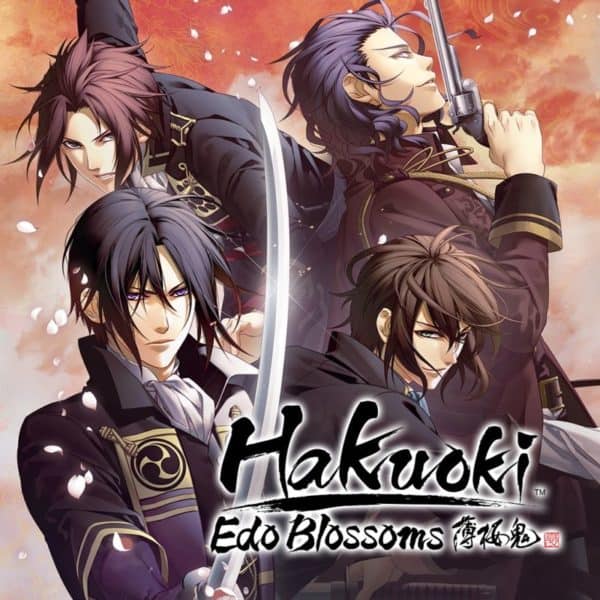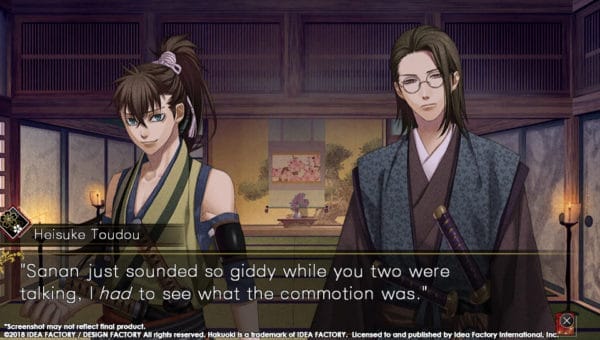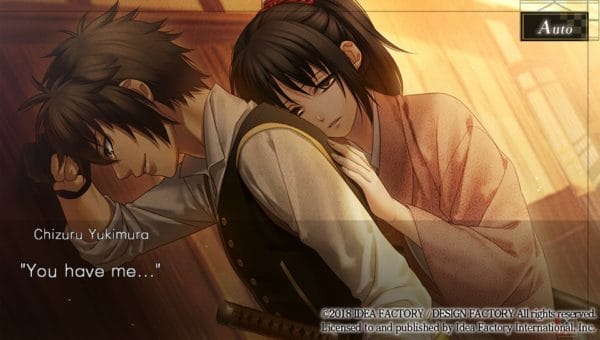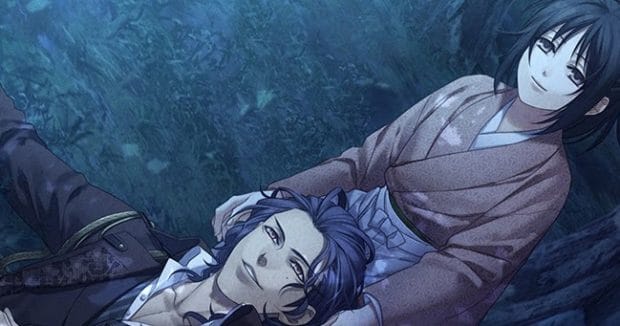Serving as a sequel to Hakuoki Kyoto Winds, Hakuoki Edo Blossoms ties up the story of Chizuru Yukimura and her friends. Edo Blossoms Deals with betrayals, deaths, and the oncoming war the Shinsengumi face. At what seems like the perfect chance for an Otome game to end somewhat on a good note, the narrative of this Visual Novel is more about reading than choice making. Thus leading you down a darker turn than with most romantic visual novels.
Review: Hakuoki Edo Blossoms

Title: Hakuoki Edo Blossoms
Platform: PlayStation Vita [Reviewed], PC
Genre: Visual Novel
Developer: Idea Factory Design Factory
Publisher: Idea Factory International
Players: 1
Release Date: March 13, 2018
Price: $29.99 (USD)
Western Influence Collides and Romance Dies

Hakuoki Edo Blossoms starts off with a brief recount of the story in Kyoto Winds. With Chizuru recounting her mission to find her father and the lead up to the Shinsengumi rescuing her. In these paragraphs, the game brings back the glossary/dictionary. This is especially apparent in refreshing players on who certain characters are. However, this doesn’t tell you everything either. Idea Factory assumes full well that you played through Kyoto Winds, if you are playing Edo Blossoms.
Knowing the first game’s story is also important because Chizuru brings up the final outcomes of certain characters. For example, some characters from the first game have actually passed away in the events leading to the end of Kyoto Winds. Edo Blossoms also creates the aura that many of the characters fell in love in the first game as well. Making them broken-spirited warriors trying to find a way to live. Many of them have lost their friends and their fighting spirit. While others have trodden down a dark path, questioning their principals and Shinsengumi values. There’s also the collision of Western influence that clashes with these characters too. Setting up a much more gloomy story than the one in Kyoto Winds.
So Serious History

Edo Blossom takes its Japanese history seriously. The Shinsengumi struggle to keep their way of life, repeatedly losing against their opposing forces. For this reason, Chizuru’s role in Kyoto Winds served to lighten the story’s tone. However, in Edo Blossoms, even she has a negative mood. She worries constantly about the men in the Shinsengumi. And it’s even worse when she is always doubting herself when it comes to her potential love interest. Causing more trouble for the soldiers with her constant questions. The biggest issue with this is that it makes the narrative unbearable.
Quest for Love or Quest for a True Ending?

Learning that Edo Blossoms was a sequel had me excited and curious as to how they would approach the romance portion. Players already went through their love interests endings, and in most romance visual novel games the pattern follows: “the good ending is the canon ending.” Whether the romance character dies for love or the main character runs away with their love interest, it still signifies an end.
However, Hakuoki Edo Blossoms breaks that pattern and not in a good way. It was a bit of a downer starting up the game and seeing players could choose which romance path to play through. For new players, it works, but for those who already made progress with these characters from the first game, it’s a total letdown. Especially because all of the paths reset. So, even though the game assumes you played the first game, it doesn’t let you continue anything you did in that game. It feels more like the purpose of Edo Blossoms is tieing up loose ends from the canon endings from Kyoto Winds, more than anything else.

For example, Take Chizuru and Toshi’s relationship. Players spent the first game dealing with his cool and mocking tone, only to see him become a fury. Something Chizuru annoyingly points out about five times in every chapter. Many actions in the game focus on helping Toshi as he becomes more of a fury. The game even introduces the mechanic that if Chizuru gives Toshi her blood, he becomes more corrupt.
This all equals experiencing life after the “Happily Ever After” phase. It’s not really all that happy though. But as someone who played Kyoto Winds, it’s heartbreaking seeing Toshi’s struggle. However, it is very frustrating to see Chizuru trying to fall in love with Toshi again. Where she should be supporting him as his current lover instead.
More Gorgeous Artwork, But There Are Issues

Much like Kyoto Winds, Edo Blossoms also features gorgeous artwork. The elegant design represents Japan’s history before the prominence of Western influence phenomenally. As the story develops and introduces more Western influences, the art style changes to match this conflict. Characters change from their old Samurai robes to more modern officer type clothing. Backgrounds also speak to this conflict giving off a great vibe of the time period.
The problem is, Edo Blossoms resembles a textbook more than a Visual Novel. The number of history lessons Chizuru gives to help describe the story’s setting masks the beauty of the artwork. Perhaps if the glossary mechanic was used more, instead of letting Chizuru explain the whole history behind the Shogunate, the artwork could speak for itself. Instead, Chizuru’s descriptions highlight the text far more than the beautiful art behind the words.
Pros
Artwork is some of the best out there
Great attention to details in Japanese History of the time period
Cons
Takes Away Choices From the first game
Chizuru is very grim and annoying
Too much retelling of the first game’s story
The game resembles more of a Textbook than Visual Novel
Final Thoughts
Overall Score: 4.0 Out of 10 Edo Blossoms is a somewhat decent game. It’s nice to see the characters I loved from the first game make another appearance. But the story is ultimately way too tragic and dark for me. Also, having to rebuild the spark between Chizuru and Toshi all over again felt very unnecessary. Not to mention, the only time I could really explore the whole story is if I went down each roster’s path and relived some of those dark moments. The usage of choice in this game doesn’t feel anywhere near as important as Kyoto Winds. And was further obscured by the insane amount of times Chizuru recounts something, doubts herself, or is just stupidly silly. Honestly, I can only recommend this to hardcore fans that really enjoyed Kyoto Winds and need an afterword.
